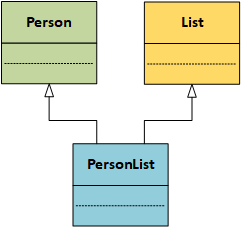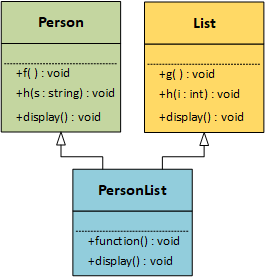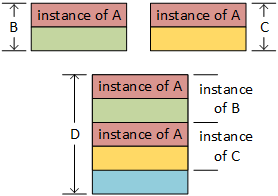 |
class Person
{
};
class List
{
};
class PersonList
: public Person, public List
{
};
|
 |
| (a) | (b) | (c) |
- A UML class diagram implementing multiple inheritance. Person is an application class, List is a basic (library) data structure or container, and PersonList is a class that can organize the attributes and operations of a Person into a list structure.
- Multiple inheritance is denoted by a comma-separated list of superclasses.
- The abstract representation of multiple inheritance extends the abstract relationship of single inheritance. An instance of PersonList has instances of Person and List. The bottom rectangle represents the features defined in PersonList.


